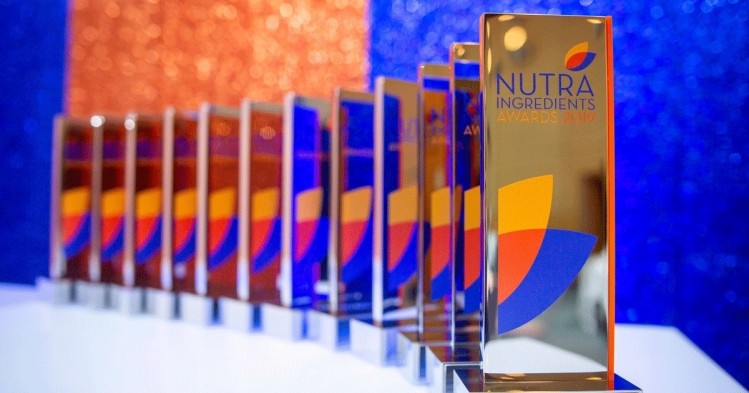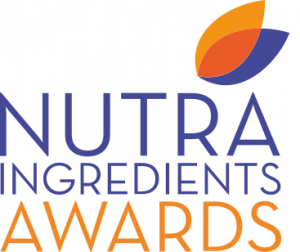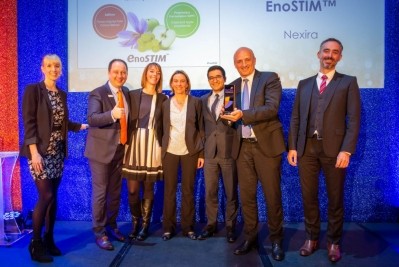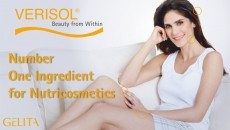NutraIngredients Awards 2020
How to make your award entry stand out: Top tips from the judges

Rewarding true innovation, market success and cutting-edge research in healthy foods, supplements and nutrition the 2020 NutraIngredients Awards is an industry-wide celebration of success.
Set to celebrate the best of the nutrition and dietary supplements industry as it returns to Geneva for its sixth year alongside Vitafoods Europe 2020 in May, the awards have become a fixture of the European calendar – and this year will be even bigger and better!
But with our extended deadline just a few weeks away ... our judges have provided some helpful hints and tips of what makes a good entry stand out.
NutraIngredients Awards: Want to know more?
Which of our categories will you be applying for? And are you sure you know the criteria for the awards?
Our helpful video guide talks you through the key differences in awards categories, and provide some handy hints of the key criteria our judging panel will be looking out for. Check it out!
Remember, the closing date for entries is Friday 7th February 2019.
Lessons from the judges: Small details and honesty matter
Veteran NutraIngredients Awards judge Ewa Hudson, director of insights at Lumina Intelligence, says that as the awards grows, the panel have seen an increasing number of very strong applications.
“There are many great products each year, sometimes going head to head. Even small differentials can affect the score,” she said.
Steve Osborn, director and technology scout The Aurora Ceres Partnership, added that judging the NutraIngredients Awards provides a window in to what is possible in overcoming the biggest challenges the food and drink industry have to overcome “and an exciting insight into what is possible.”
“The thing that I always look for as a judge are innovations that truly solve an industry challenge – innovation should add value!” says Osborn. “Those entries which fail to show how they really make a difference will fail to score well.”
“I also look for those technologies that are honest about their limitations – those that claim to cure all often sound like snake-oil!” he added.
Returning judge Joerg Gruenwald agrees and reminds entrants that the judges are often looking through many very similar entries and have to understand in a fast and easy what makes your entry special and deserving of the prize. “What is new, interesting, different compared to the rest of the crowd, why do people need your product and how you have proven the claims you make.”
“A short abstract with all the essentials (with the details as appendix) is much better, than a long and boring text about the market and your business plan,” says Gruenwald. “We know the market very well and don’t need to be educated, we only want to hear about YOUR products specifics!”
Our own trends and innovation editor Nikki Hancocks says she is looking for applicants who have discovered a real gap in the market “and who have a clear passion for improving consumer health.”
“Make it clear why your solution is needed,” she advises. “What are your closest competitors doing and why are you better?”
Tom Morgan, senior market analyst at Lumina Intelligence agrees that being concise and clear are key to scoring well, and adds that providing clear and relevant scientific evidence is vital.
“Evidence your claims, linking to studies,” says Morgan. “The better the evidence is, the less awkward questions we’ll be asking later on.”
To-the-point descriptions and honesty are key for Jens Bleiel too, who emphasises the importance of short and succinct descriptions and honesty when describing their own market success: “It doesn’t help if the applicant is describing market success and a bit of research shows a different perspective.”
Will Chu, science and technology editor at NutraIingredients says he looks for for well written and thoughtful entries that try to explain the motivations behind entering for that award: "I look for why the candidate stands out and where it has gone the extra mile to truly deserve the title."
"We go through a lot of entries each year so something that stands out and demands to be read always does well."
Top 10 tips from the judges
1. Keep it short: Brief and to-the-point descriptions are key to success say Jens Bleiel and Tom Morgan
"Make your point about what your product does concisely, on a top line level," says Morgan. "In judging you want to know what the product does off the bat. This can be one or two sentences."
2. Tell a story: Will Chu and Jens Bleiel say the best entries always tell a genuine story that has consistency.
"The best entries for me tell a story about to the work that has gone into the product/company/ingredient," explains Chu. "They give insights into the thinking behind the candidate and tell the judges of the innovation and uniqueness that underpins their approach."
3. Keep it real. Be Honest: Steve Osborn and Tom Morgan say the judges take a dislike to hype, and prefer realistic and honest appraisals
"Keep it real," says Morgan "There is no true panacea in this world, do not try and laud your product as one. Instead, amaze us with realistic expectations."
4. Provide relevant facts and data: Back up your claims with good data, say Ewa Hudson and Joerg Guenwald, but don't let your application get bogged down with irrelevant data
"Demonstrate the demand and/or commercial success," says Hudson. "Numbers help us set the benchmarks so where you can, give information: y-on-y growth, new markets, growing distribution channels, partnerships, prevalence of health conditions the product is designed to support."
5. Have solid science: Entries must back up claims with good science, linking to published peer reviewed studies, and where possible showing mechanisms of action, say Ewa Hudson and Tom Morgan
"Solid science is vital," says Hudson. "Clearly state the results in the application, purely relying on lengthy attachments can be open to interpretation."
6. Safety. Safety. Safety: And perhaps another safety on top too, says Tom Morgan.
"The more amazing your product sounds, the louder the alarm bells ring about potential side effects," warns Morgan. "The closer your product is to a food, the more safety veers towards food level safety. The closer to a drug it dances, the more pharmaceutical standards are expected."
7. Use your attachments wisely: Ensure you provide an overview of your information in the main form, and use the attachments to back up and provide further evidence to solidify these claims, suggest Joerg Guenwald and Jens Bleiel.
"Facts, data, examples and excellent marketing material or scientific articles in the attachment are very convincing, so long as they are really meaningful and supporting the application," says Bleiel. "It is not helpful, however, if the application has dozens of articles in the attachment which are only referring to one component of the mix of ingredients and has nothing that relates to the final product or blend that is presented in the application."
8. Market application is vital: All entries must show realistic judgements of market success, say Jens Bleiel and Tom Morgan. That includes existing market achievements, and realistic projections based on the marketplace and trends.
"If you can, show proof of your success on the market," says Morgan. "If you can’t show proof on market, give evidence as to WHY the market would react well to your product. Is there evidence of a gap? Is it breaking new ground entirely?"
9. Don’t just copy & paste: Be careful not to just copy and paste information - especially if you are applying in multiple categories - says Jens Bleiel
"Create a genuine, well redacted story for the particular awards category," says Bleiel. "It is very demotivating for the judges if they notice that the application has been put together by copy and paste from other applications, with little care."
10. Clearly explain how and why you stand out: The best entries make it very clear what it is that makes them different to their rivals, and what gives them the X-factor - something that will really change the game - say Ewa Hudson and Steve Osborn
"We are looking for a true innovation – if your product offers something others don’t, be very explicit about it!" says Hudson.













